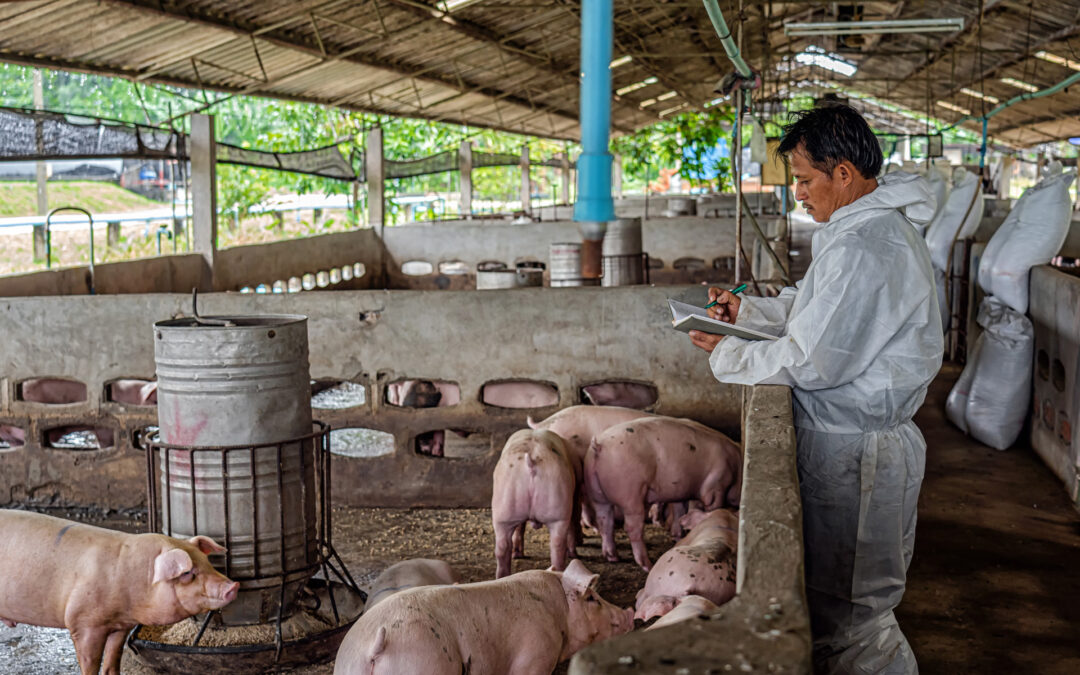Manure storages are anaerobic environments that produce biogas such as methane, carbon dioxide, and hydrogen sulfide (Moody et al., 2009). In the presence of foam, the manure concentrates at a density of 50%-70% methane inside of the bubbles, which is explosive at even lower concentrations of 5%-15% (Van Weelden et al., 2016). The foaming manures compromise the safety of employees, farm animals, and the environment due to the increased occurrences of poisoned swine, and flash fires at facilities, besides greenhouse gas emissions (Van Weelden et al., 2016; Zhao et al., 2005). Therefore, research to elucidate what the leading causes of foaming incidence are is of major importance to prevent its formation and safeguard the safety of animals and employees.
As described in the previous article, deep pit foaming is caused by specific components. Biogas production (especially methane) by methanogen bacteria associated with surface active agents that encapsulate gasses (produced by microorganisms in the slurry) and hydrophobic solids are essential components to foam formation. Nonetheless, it may happen that with two barns treated under the same conditions, with the same pigs eating the same diet, one foams and the other does not. The solution to this quandary is based on the microbial community that develops in the manure.
Research conducted on foam and its potential causes in 60 swine finishing facilities with deep pit manure storages led by Iowa State University, University of Minnesota, and the University of Illinois showed that methane is produced during the anaerobic breakdown of manure regardless of the presence or absence of foam (Gates et al., 2015). However, foaming manures produce methane at faster rates (2-3 times as much per day) than their non-foaming counterparts. This event was attributed to the difference between the methanogenic communities in both manures, where unclassified methanogens in the foam produce higher rates of methane. Foaming manures also exhibited increased presence of ruminococcaceae, ruminococcus, and bacteroidales that were slightly correlated to higher levels of added oil in the diets. Non-foaming barns tended to present higher levels of lactobacillus that break down proteins, which are important for the emulsion of foam, showing an accumulation of volatile fatty acids, slightly lower surface tension in the manure, and, consequently, lower methane production rates (Gates et al., 2015).
The input to manure storage consists of animal excreta (urine and feces), wasted feed and water, and wash waters from cleaning (Van Weelden et al., 2016). Since the composition of pigs’ diets affects the amount and composition of their feces and urine, it also interferes with microbiome and gas emissions from manures (Jarret et al., 2011b; Van Weelden et al., 2016; Zhao et al., 2005). The microbial difference in the manure is related to manure carbon contents, which may vary according to the composition of the diets. The increase in the use of by-products from food production or biofuel, such as wheat distillers’ dried grain with solubles (DDGS), in the place of grain supply on pig diets, alters manure composition. It has been suggested that higher fiber diets, especially from DDGS, tend to lead to foaming communities to crusting (Gates et al., 2015). Some studies reported an increase or a reduction in methane production depending on the quantity and composition of DDGS in pig diets (Hanse et al., 2007; Jacobson et al.,2013; Jarret et al., 2011a; Mroz et al., 2000). Others reported that lowering pH, salt, neutral detergent fiber, and increasing crude protein in feed composition reduced the chances of foaming in manure significantly.
In general, foaming occurs because methane is generated as a result of anaerobic digestion, mainly by unclassified methanogenic microorganisms, as well as shifts in the abundance of specific bacterial species. The type of pig diets, in which DDGS and other by-products may be the source of surfactants and/or fiber, also contribute to foam production. Therefore, determining the cause of manure foaming can be helpful in making management decisions to reduce risks.
References
Gates R., Pepple L., Kent A, Anderson D., Kerr B., Trabue S., Clanton C., Jacobson L., Hetchler B., Hu B (2015). Research Review: Studying the causes of foaming manure. University of Illinois-Champaign, Iowa State University, USDA-Agricultural Research Service’s National Center for Agriculture and the Environment, University of Minnesota. Available at: http://themanurescoop.blogspot.com/2016/07/whats-up-with-manure-foaming-where-are.html.
Hanse M.J., Chwalibog A., Tauson A.H. (2007). Influence of different fiber sources in diets for growing pigs on chemical composition of feaces and slurry and ammonia emission from slurry. Anim Feed Sci and Technol, v.134, p. 326-336.
Jacobson L.D., Hu B., Yan M., Akeniz N., Clanton C (2013). The potential causes of manure pit foaming in pig finishing. ASABE Paper nº131620730. St. Joseph, Mich.: ASABE.
Jarret G., Cozannet P., Martinez J., Dourmad J.Y (2011a). Effect of different quality wheat dried distiller’s grain solubles (DDGS) in pig diets on composition of excreta and methane production from feaces and slurry. Livestock Science, v. 140, n.1-3.
Jarret G., Martinez J., Dourmad J.Y (2011b). Effect of biofuel co-products in pig diets on the excretory patterns on N and C and on the subsequent ammonia and methane emissions from pig effluent. Animal, v.5, p. 622-31.
Moody L., Burns R., Muhlbauer R. (2009). Deep pit swine facility flash fires and explosions: sources, occurrences, factors, and management. National Pork Board. Des Moines, Iowa.
Mroz Z., Moeser A.J., Vreman K., van Diepen J.T., van Kempen T., Canh T.T., Jongbloed A.W (2000).
Effects of dietary carbohydrates and buffering capacity on nutrient digestibility and manure characteristics in finishing pigs. J. Anim. Sci., v.78, p. 3096-3106.
Van Weelden M.B., Andersen D.S., Kerr B.J., Trabue S.L., Pepple L.M. (2016). Impact of fiber source and feed particle size on swine manure properties related to spontaneous foam formation during anaerobic decomposition. Bioresource Technology, v.202, p.84 92.
Zhao, L.Y.; Manuzon, R.; Brugger, M.; Arnold, G.; and Bender, R. (2005). Air quality of swine wean-finish facilities with deep-pit and pull-plug-lagoon manure storage systems. Proceedings of the Seventh International Symposium. ASAE No. 701P0205.
